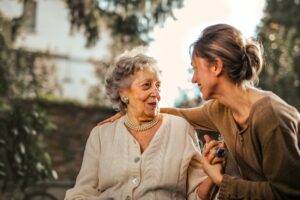Should You Take a Pension or a Lump Sum?
Deciding between a lump sum or receiving pension benefits monthly requires careful planning and consideration. Though your personal situation and circumstance will always be the most important factor in any major financial decision, there are several key considerations to keep in mind when deciding how to take your pension.
What happens if you take a pension as a lump sum buyout?
If your pension plan allows a single payment option, you’ll have the ability to roll the funds over to an IRA, similar to rolling over an old 401(k) plan. If the funds are moving directly from one custodian to another, taking a lump sum pension payment isn’t a taxable event.
After investing the money in an IRA, you may begin to withdraw funds without penalty under the regular IRA distribution rules (typically age 59 1/2). Like an IRA, you will also need to begin taking minimum annual distributions (called MRDs or RMDs).
Required minimum distributions on a lump sum pension payout
The Secure Act, which was passed at the end of 2019, changed the age some retirees will need to begin RMDs. Individuals born on or before June 30th, 1949 will need to take their first required minimum distribution at age 70 1/2. You may defer the first RMD until April 1st of the year following the year you turn age 70 1/2 which remains unchanged from previous legislation.
Investors who are born on or after July 1st 1949 must take RMDs starting at age 72. Though they too can defer their first RMD until April 1st of the year after the year they turn 72. RMDs must be taken by 12/31 for every year after. If you choose to defer the first RMD until April, you will need to take another RMD by 12/31.
Withdrawals from a rolled-over pension will be taxed as ordinary income, which is the same tax treatment as monthly pension income. As is standard with an IRA, you can name your own beneficiaries and direct the investment of the account. The funds will grow tax-deferred until they’re withdrawn.
Should you take a lump sum or lifetime pension payments?
One of the most important decisions investors with a pension face is whether to take a lump sum or annuitize the pension into monthly benefits. As you weigh the pros and cons, there are several interrelated factors to consider to help guide your decision.
5 factors to consider when deciding between lifetime pension payments or a lump sum:
- Your other retirement assets
- Flexibility of payout options
- Your family history of longevity
- Your comfort taking on investment risk
- Financial health and stability of the company
Do you have other retirement savings?
If you have sufficient assets outside of the pension plan to fund your retirement, (e.g. an IRA, 401(k), 403(b), or non-retirement investment portfolio), you likely don’t need to rely on the guaranteed monthly payment from a pension to meet your income needs.
If you haven’t saved enough and are concerned about outliving your savings, the income from a pension may be invaluable. In this situation, the potential upside of taking a lump sum and investing the proceeds for a higher return is likely not worth the risk. Especially since you’d be taking money out to cover expenses, leaving fewer dollars invested. For individuals with modest savings, it’s often more about steady income to meet expenses than anything else.
Another consideration: your expected Social Security benefits.
Do the payout options suit your needs?
Depending on your health, family situation, and payment options in your pension, annuitizing the benefits or taking a lump sum could be advantageous. If you’re married and in poor health, it may make sense to consider a 75% or even 100% joint and survivor annuity in this case. Keep in mind, there is a reduction of your monthly benefit with this option.
If you don’t expect you or your spouse to have a long life expectancy due to illness, consider your options. Once you elect a joint and survivor annuity, you can’t change it after payments begin. Other considerations: up-front access to the funds to cover medical expenses, an assisted living facility, or how either choice may impact Medicare eligibility.
Widows, widowers, and unmarried individuals
If you’re widowed or unmarried, it may be worthwhile to consider a lump sum or period certain payment, if available. This would guarantee payments to you or your beneficiary for a period of time, perhaps 10, 15, or 20 years. A lump sum could provide additional funds to leave for heirs. However, the risk of running out of money during your lifetime is greater. Otherwise, a single life annuity would only pay benefits during your life. Generally, joint and survivor annuities are only available to spouses.
Age gaps between spouses
If you and your spouse have a large age gap, the benefit payment could be significantly reduced for joint and survivor payouts. This is because payments would be required over your spouse’s much longer life span.
Divorce
If you have a pension and are divorced, you’ll need to consult your divorce agreement and an attorney first. Depending on the agreement, you may need consult your ex-spouse to get them to sign off on any changes to your pension.
You’ll always want to review the payment options in the plan. Every plan is different and the reduction of benefits from the single life payment option will vary. If the options are inflexible or incongruent with your needs, taking a lump sum could emerge as the best option, bearing in mind all of these risks.
Life expectancy
The longer you live, the more valuable a guaranteed income stream can be. However, many private pension plans don’t offer a cost of living adjustment (COLA) so benefits keep up with inflation. Without a COLA, over decades in retirement your purchasing power will decline. If you don’t have other assets to bridge the gap, it could be problematic.
Taking a pension as a lump sum allows you to invest in the stock market. Historically, exposure to growth in equity markets has been essential to keep pace with inflation. While the stock market can help preserve purchasing power over time, taking a pension buyout shifts the investment risk from your employer to you. A prolonged downturn or misappropriated investments could mean outliving your assets.
How aggressive are you as an investor
One reason to consider a lump sum instead of receiving pension payments is the opportunity to outperform pension payments by investing the funds yourself. While possible, this shifts the investment risk from the defined benefit pension plan to you: the upside and the downside. Since pensions are designed to be conservative, it’s possible to outperform by taking a lump sum, provided you’re comfortable with the volatility assumptions. Asset class diversification can help reduce risk, but never to zero.
For conservative investors who prefer a portfolio with a significant amount of bonds, it may not be possible to “beat” the pension on your own. Many retirees seek to reduce their risk to manage market volatility. While taking a lump sum does mean more control to decide how you’re invested and who the beneficiary is (particularly for non-spouse heirs), you must weigh whether it’s worth losing the promise of income for your entire life.
Financial stability of your former employer
Although a pension is the best example of a sure thing, there’s still no such thing as a sure thing. It’s not 100% certain that your promised benefits will continue in their current form; even after you have retired and begun to receive benefits. As such, the financial stability of your employer must be considered. This is true even if you work for a state/local government.
Changes to your pension benefits can happen due to many different reasons. Bankruptcy, cutbacks, mergers/acquisitions, under-funding, and other events can affect pension payouts. Depending on why your benefits are being cut, your age, etc, you may still be eligible to receive some benefits thanks to the Pension Benefit Guaranty Corporation (PBGC), a federal agency.
The PBGC doesn’t insure small professional service pensions or non-private plans. Benefits are limited to a maximum guarantee. If you have serious concerns about the viability of the company, it may make sense to consider a lump sum payment if offered.
These considerations also apply when a company seeks to buy out a pension from current and former employees, by offering a one-time payment in lieu of monthly pension income.
Simplified example: lump sum vs pension
To illustrate the risk-reward, consider this overly-simplified hypothetical example.
Jim and Pam are both 70 years old. Jim is already retired and Pam is retiring next week. Pam has the following options:
- Take a $150,000 lump sum and roll the funds over to an IRA
- Receive $1,500/month from the pension for Pam’s life, with a 50% joint and survivor annuity. This means Jim would receive $750/month if he survived Pam
Pam needs to begin her pension in this year or start required minimum distributions. (Note: starting in 2020, the RMD age has increased to 72)
Pension: If Pam lives for 20 years (through age 89), she will receive $360,000 in pension benefits, without a cost of living adjustment.
Lump sum: If Pam takes a lump sum and begins RMDs, after 20 years the total of the RMDs she received and her final account value at death would equal $362,900. This is assuming an annualized return of 6.5%. In another words, she’d need to earn at least 6.5% annually in the market for this strategy to pay off.
Alternate scenarios:
- If Pam died after 10 years, and only Jim lived to receive 20 years of pension payments, combined they would have received $270,000. This is almost $93,000 less than the assumptions for the lump sum scenario above.
- If Jim predeceased Pam, and she dies after 10 years, the couple would only receive half of what they would have if they took a lump sum instead.
- Had Pam lived through age 94, her benefits would exceed the lump sum assumptions by $40,000. This gap widens to $130,000 if Pam’s average investment return dips to 5%. (Which still implies a decent equity exposure)
- If Pam withdrew funds from her lump sum equal to what she would have received in a pension, $18,000 per year, she would deplete her account during the 12th year (age 81), assuming a 6.5% annual return
What to do with a lump sum from a pension
If you decide to take your pension as a lump sum, it’s really important to have the right investment strategy in place. Diversifying your investments can help protect you against a market downturn. However, there’s no magic allocation that only delivers upside without any of the risk. Consider working with a fee-only fiduciary wealth manager to stress test your retirement plan and help ensure your portfolio is invested properly throughout retirement.
Closing thoughts
Determining the optimal strategy for your pension requires an analysis of your entire financial situation, ideally with the help of a fee-only financial advisor. There are many nuances to a person’s circumstances that can dramatically alter a recommended course of action. As a result, it’s really important to engage a professional to help ensure you’re taking all factors into account.











